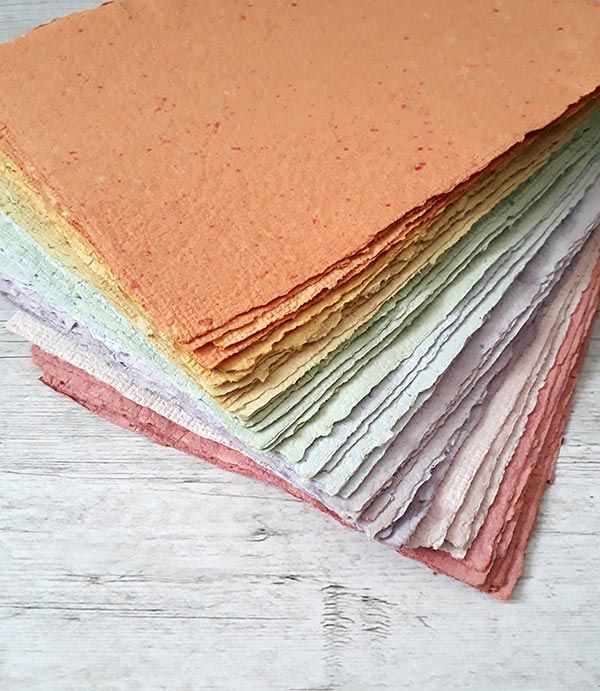Enjoying Outside, Inside - Homemade Paper

Homemade paper by VeraViglie.com
You may recall learning that the first paper products were made from the pith of a sedge called papyrus (Cyperus papyrus). The first known use of papyrus was in Egypt as papyrus was plentiful in the Nile Delta. Papyrus was also used for other products such as reed boats, sandals, baskets, ropes and mats.
You can make your own paper using papyrus if you happen to visit Egypt or the Mediterranean region but you can also make paper using your own recycled pieces of office paper, colored construction paper or tissue paper, anything that isn’t shiny (like magazines) or waxy (like tootsie roll wrappers). You can even add flower petals, seeds or leaves from your own garden to add bits of color and texture to your paper!
To get started, you’ll need to have a few things on hand:
-a mixing bowl
-a mould and deckle (more on those in a second) or screen covered frame
-a blender
-recycled office, tissue or other paper
-water
-a plastic vat (a bit larger than your mould and deckle, a plastic dishwashing tub usually works well)
-sheets of newspaper, felt, towels or other absorbent material
-a sponge
-confetti, flower petals, leaves, seeds, glitter, bits of colored thread, etc. to add color and texture (optional)
A mould and deckle aren’t hard to make but you can also purchase them here or here if you prefer that. For instruction on making your own mould and deckle, visit here.
To begin making your own paper you’ll first need to make the pulp which involves a blender, water and recycled paper. You can use your kitchen blender but you might not want to use it to make smoothies after you’ve used it to make paper. If you get really serious about paper making, you can purchase a professional blender designed especially for blending pulp for paper making.
First take a couple sheets of paper and tear them into smaller pieces and soak them in the mixing bowl for a few hours to overnight, this step makes it a bit easier on the blender. Once the paper is soaked, fill your blender about three quarters full of water and throw in a couple of sheets worth of the torn and soaked paper. To get different colors and textures you can experiment with different colors and types of paper. Turn the blender on low working your way up to high speed. Keep blending until it sounds pretty uniform but do stay nearby to make sure the blender isn’t sounding strained which may mean that the paper is wrapped around the blades. Once it’s smooth, you’ll need to dump the beaten pulp into the vat (plastic tub); if you don’t plan on finishing your paper right away, you can store the pulp in a bucket for a few days but don’t wait too long as it can get a little funky.
When you are ready to make your paper dip your mould or screen covered frame (whichever you are using) into the vat of pulp a few times, tipping and shaking it to spread the paper slurry out into an even thickness. Before you do this, you can add whatever you like to your paper to add texture and color. Lay the mould on something absorbent and blot off as much of the excess water with a sponge or an absorbent material. Flip it over on to a hard, flat surface covered with felt, if the paper mixture doesn’t readily come out, try drying the back of the screen some more, tap it or gently peel the paper off. You can make imprints in the wet paper if you’d like to by pressing leaves, lace or anything you’d like into it and leaving it in place until the paper is completely dry. Cover the other side of the paper with another piece of felt and roll with a rolling pin to help bind the fibers together and flatten the paper. Sandwich the pieces of paper between pieces of felt and keep them under a heavy book or cutting board to keep them flat. Let them dry thoroughly, this may take a day to several days and then it’s ready to use!
Here are a few articles and tutorials if you’d like to see more detailed instructions and different techniques.
https://www.thesprucecrafts.com/make-unique-handmade-paper-by-recycling-2905566
https://www.artsy.net/article/artsy-editorial-crash-course-basic-papermaking
https://www.paperslurry.com/2014/05/19/how-to-make-handmade-paper-from-recycled-materials/
-Kristie Ehrhardt; kehrhardt@tuleyome.org
Tuleyome Land Conservation Program Manager
RECENT ARTICLES






